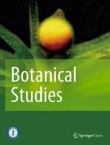Citation Impact 2023
Journal Impact Factor: 4.1
5-year Journal Impact Factor: 3.8
Source Normalized Impact per Paper (SNIP): 1.405
SCImago Journal Rank (SJR): 0.740
Speed 2023
Submission to first editorial decision (median days): 20
Submission to acceptance (median days): 114
Usage 2023
Downloads: 388,267
Altmetric mentions: 226
Construction of gene causal regulatory networks using microarray data with the coefficient of intrinsic dependence
In the past two decades, biologists have been able to identify the gene signatures associated with various phenotypes through the monitoring of gene expressions with high-throughput biotechnologies. These gene...
